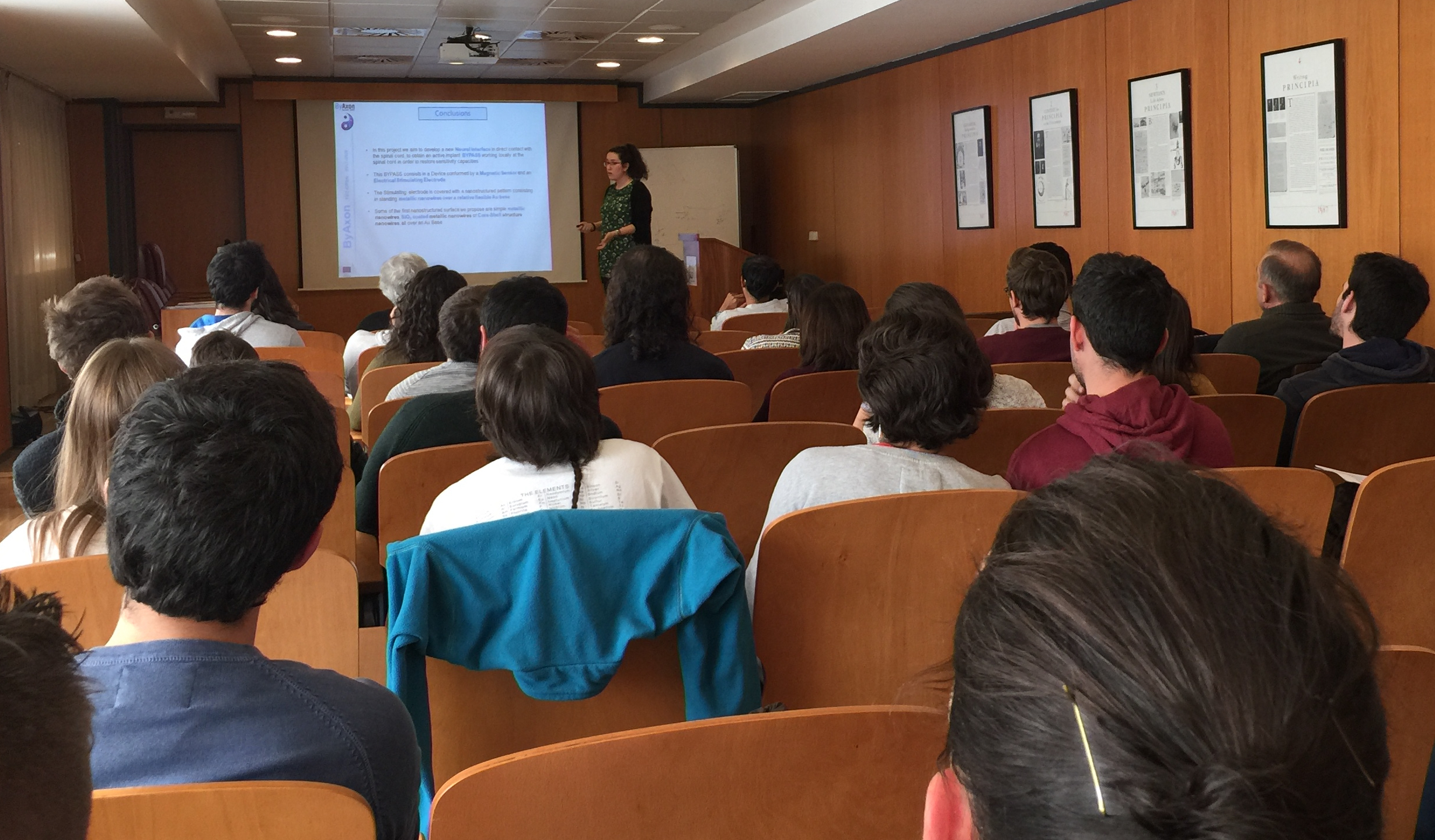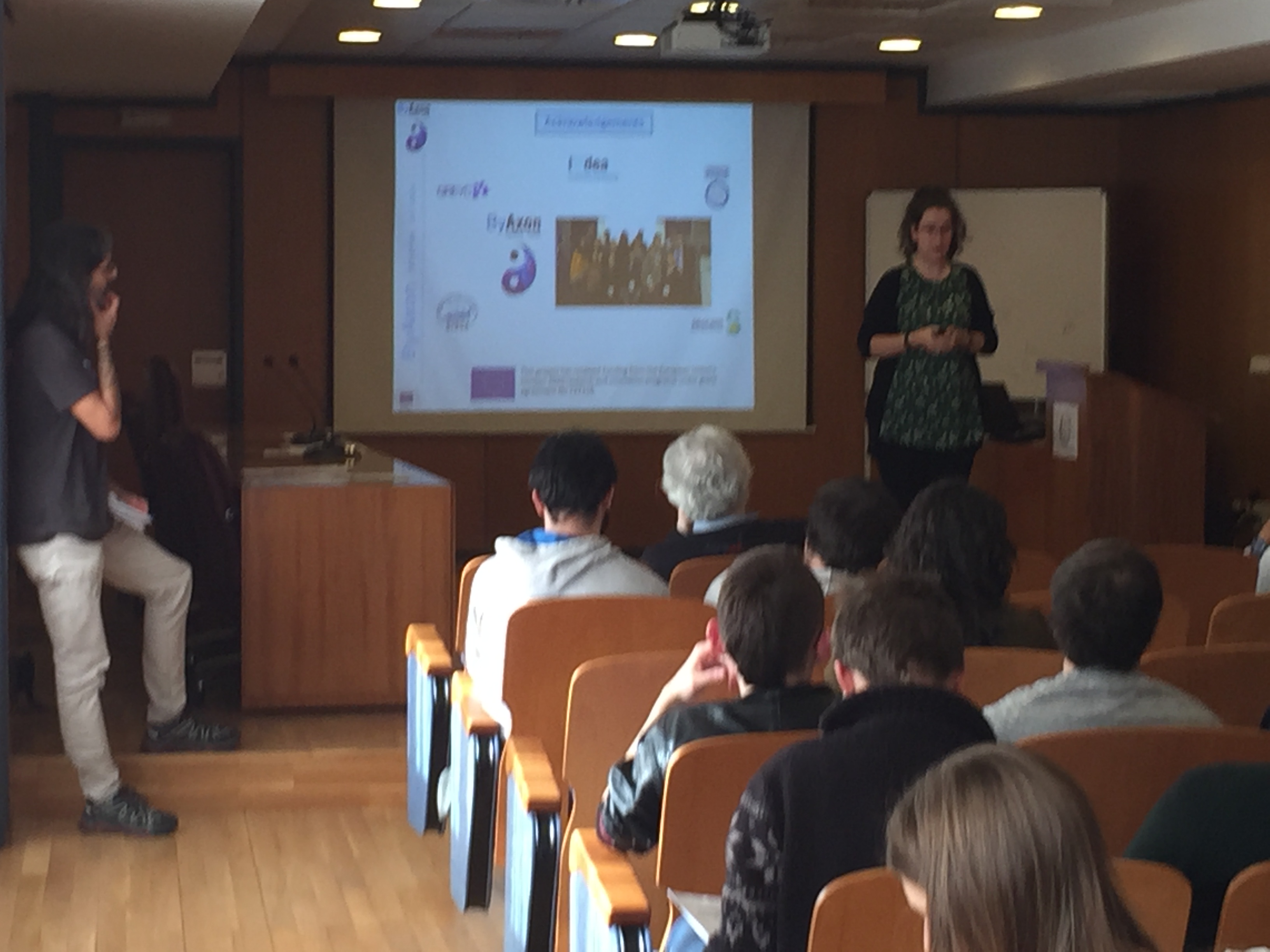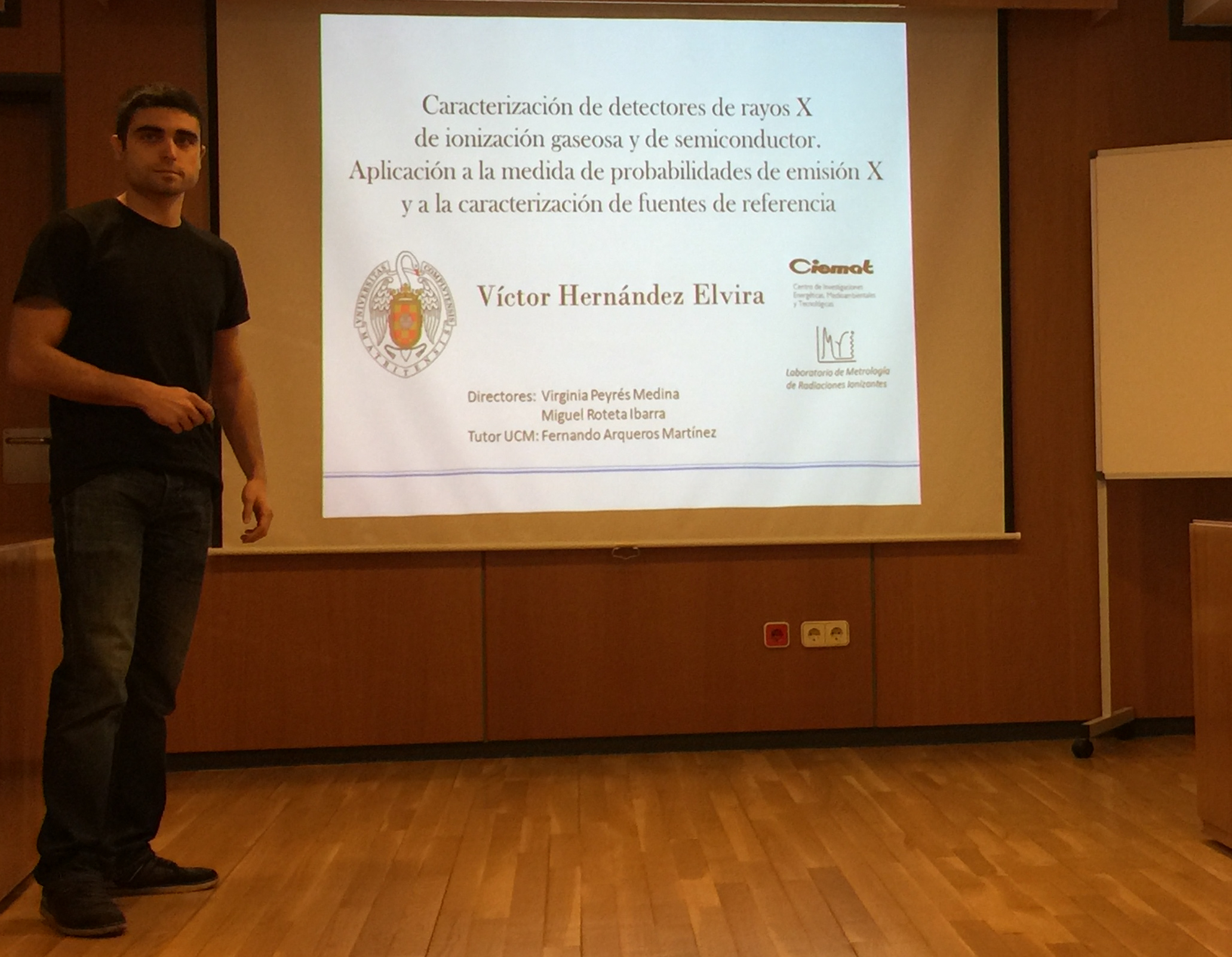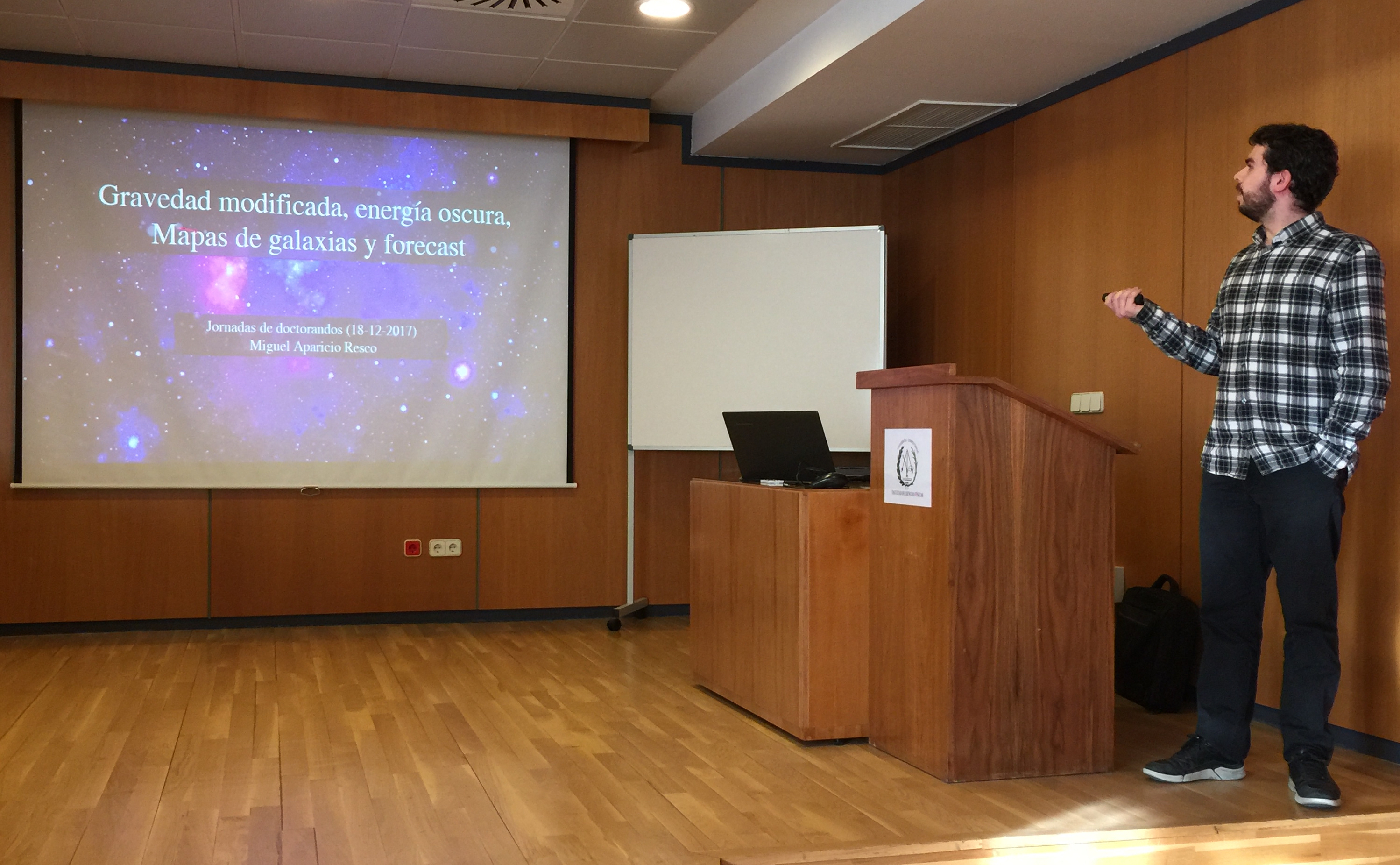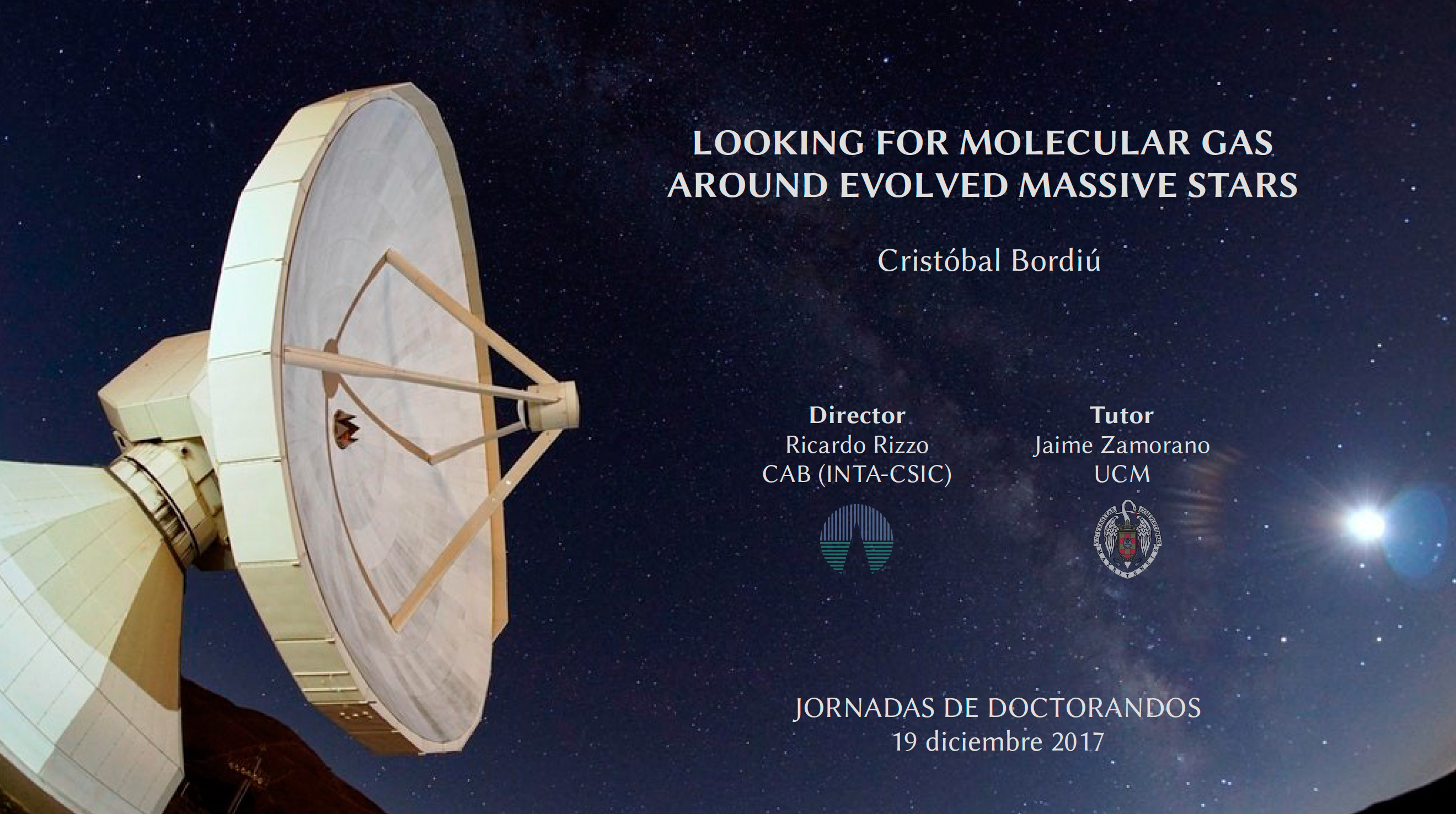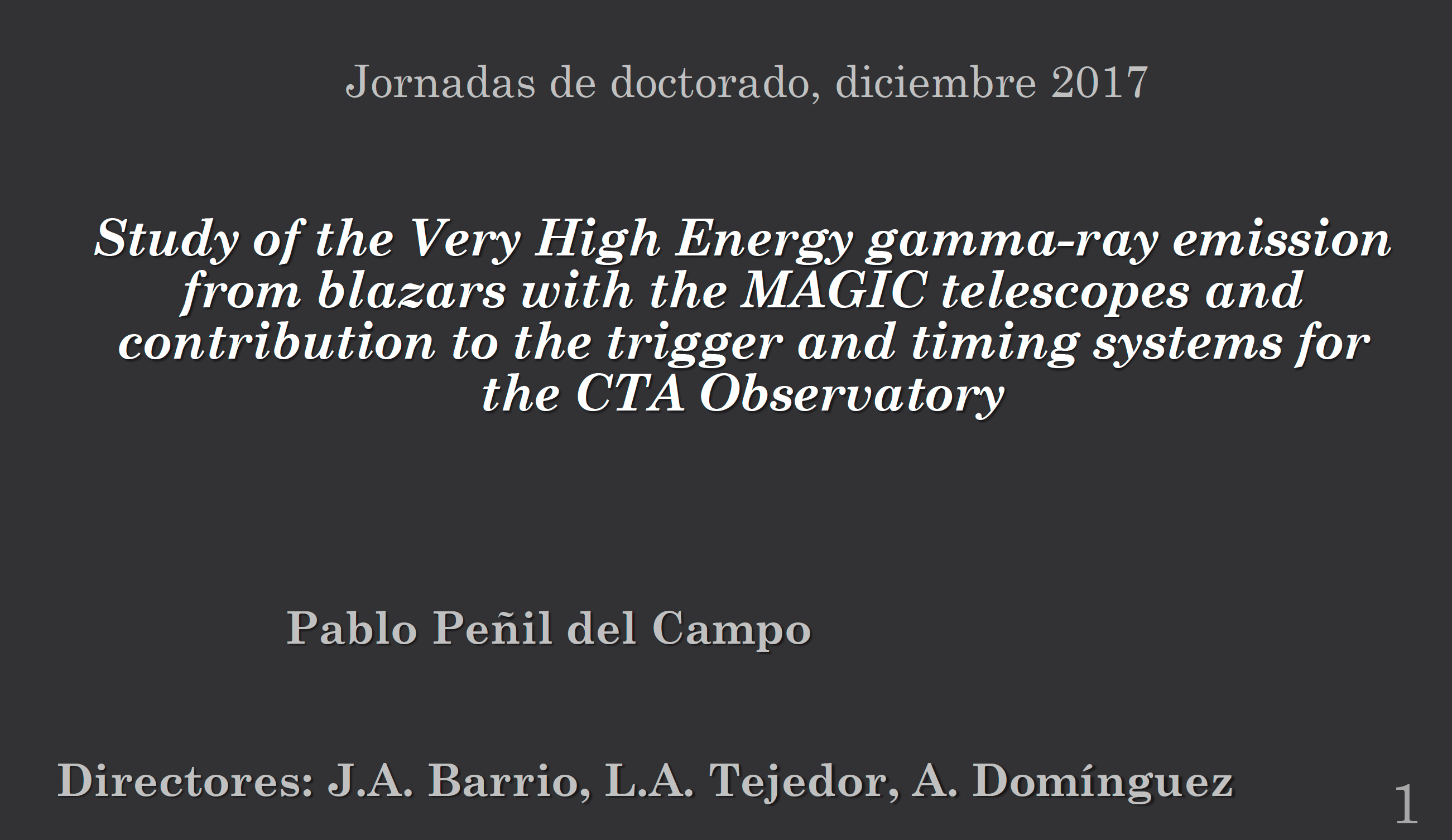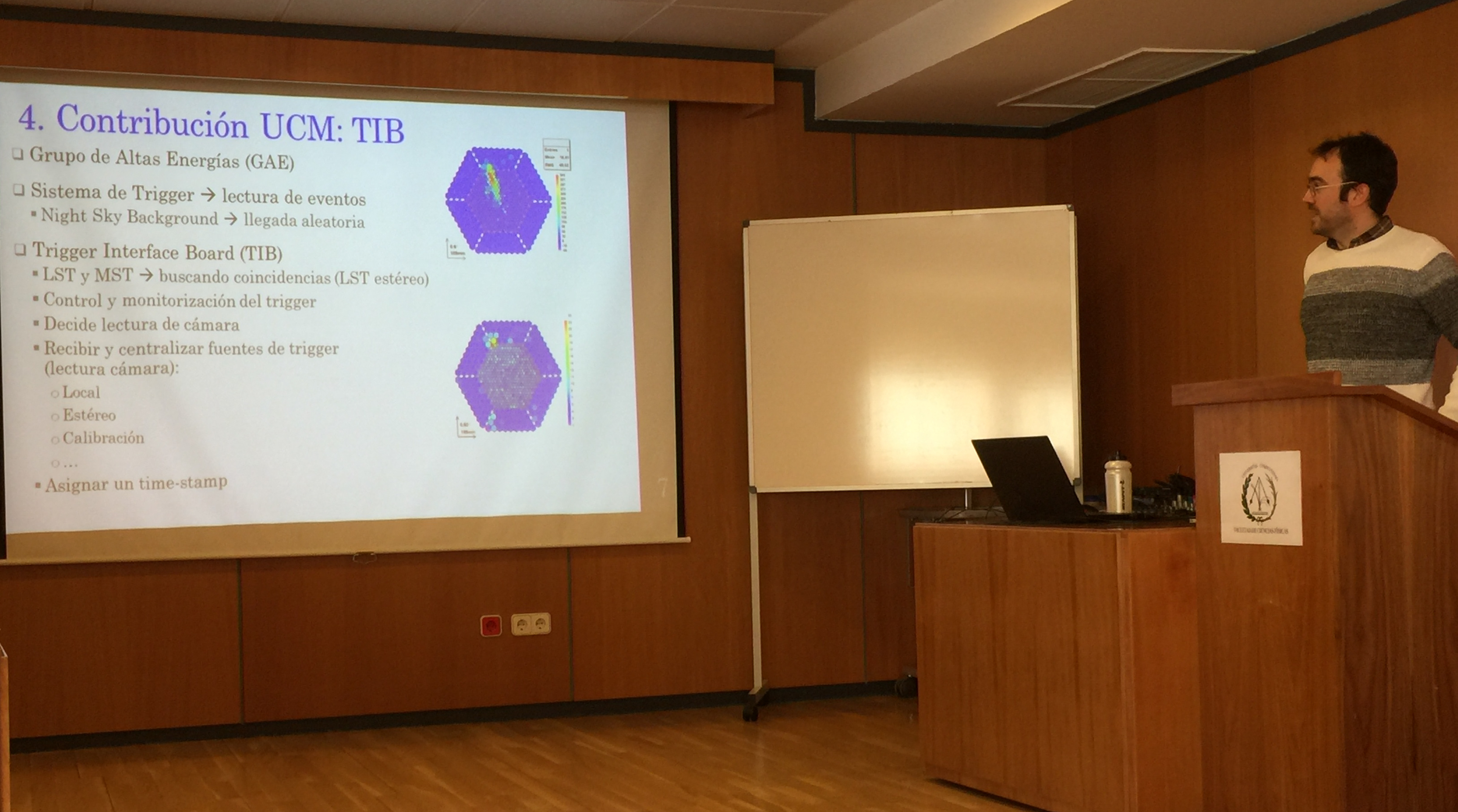Jornadas de Doctorandos 2017-2018 (Diciembre 2017)
- Jornadas conjuntas de los programas de Doctorado en Físicas y Astrofísica (18 y 19 de Diciembre de 2017), Facultad de CC Físicas, sala de Grados.
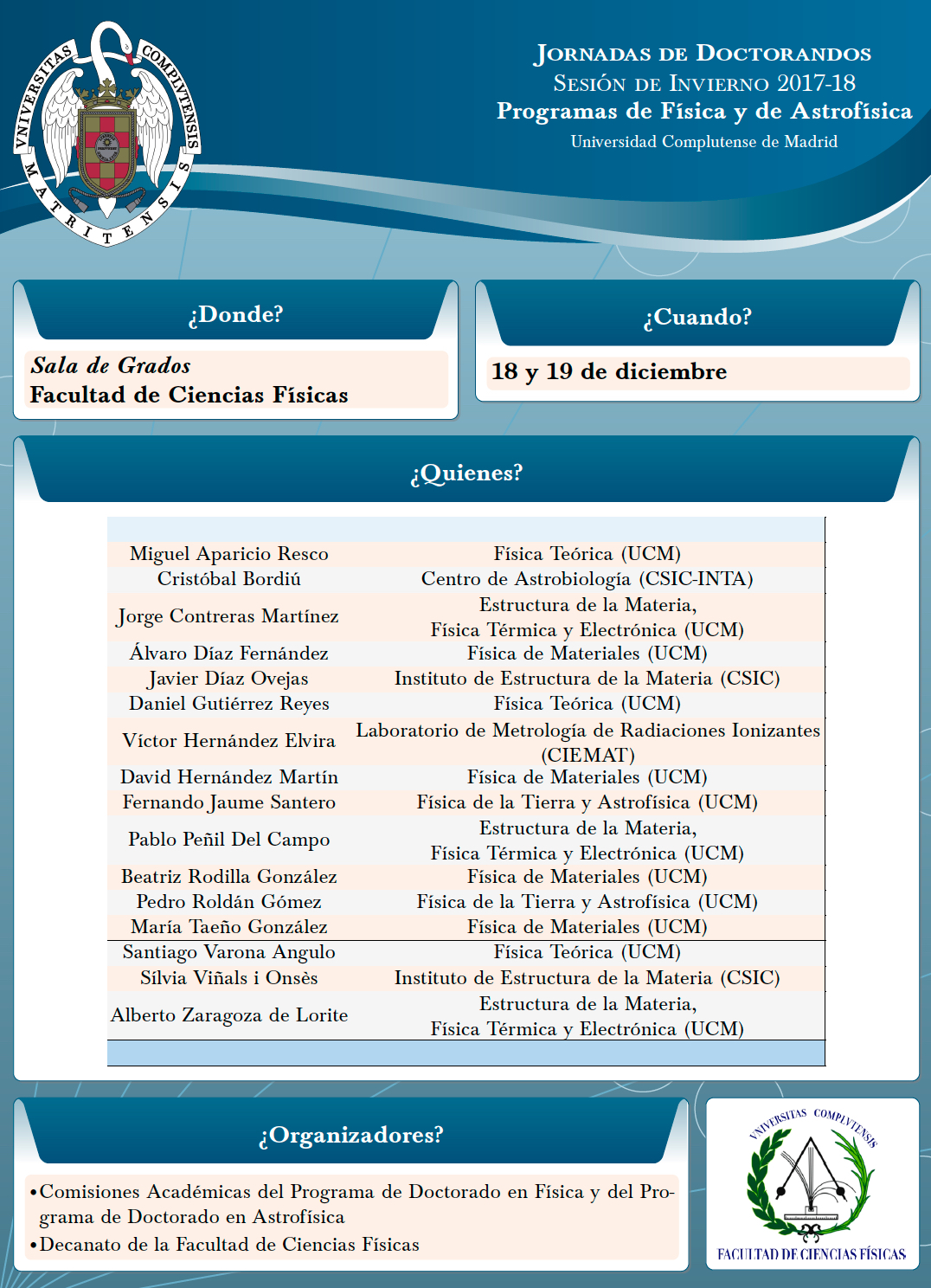 |
||
|
|
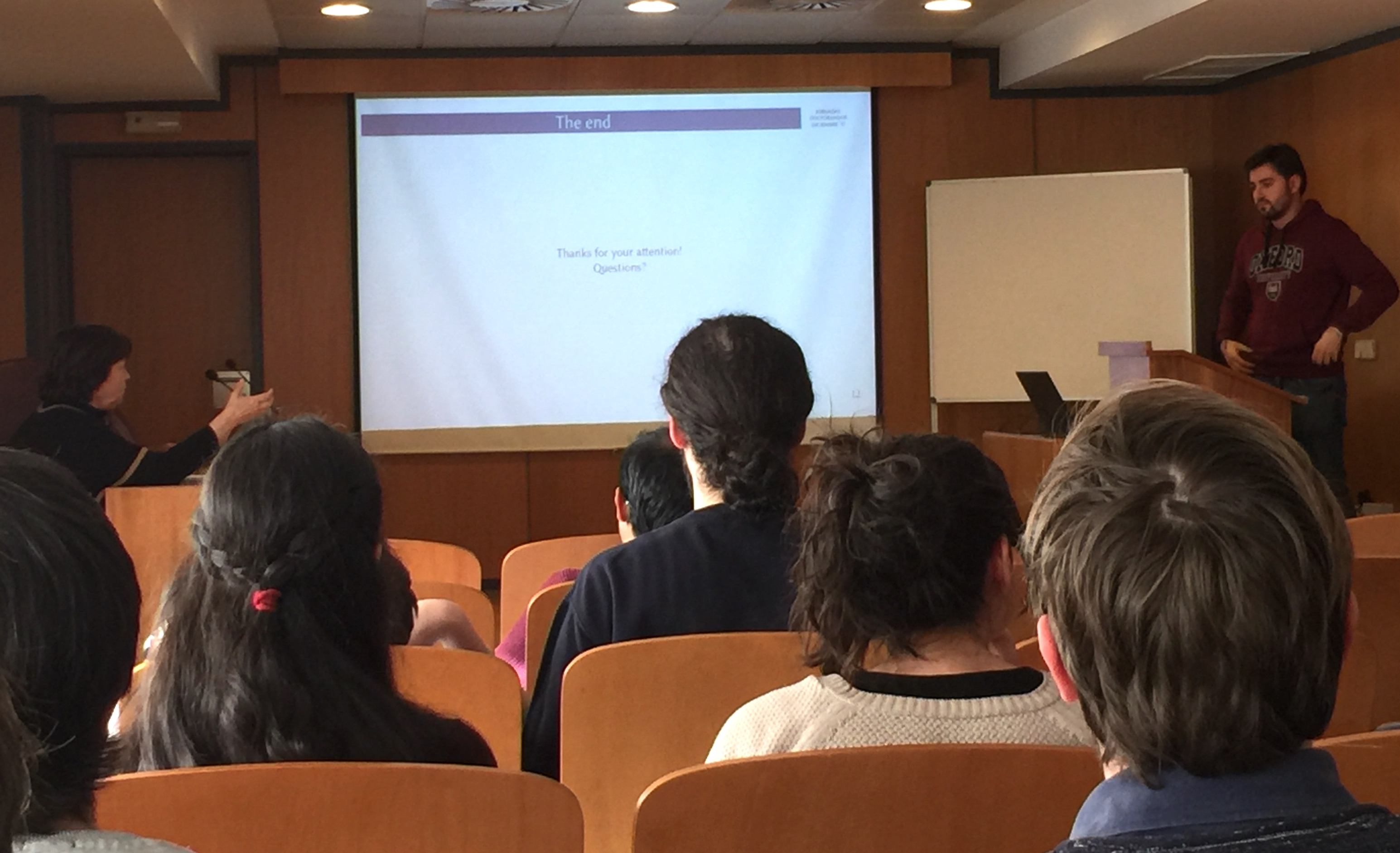 |
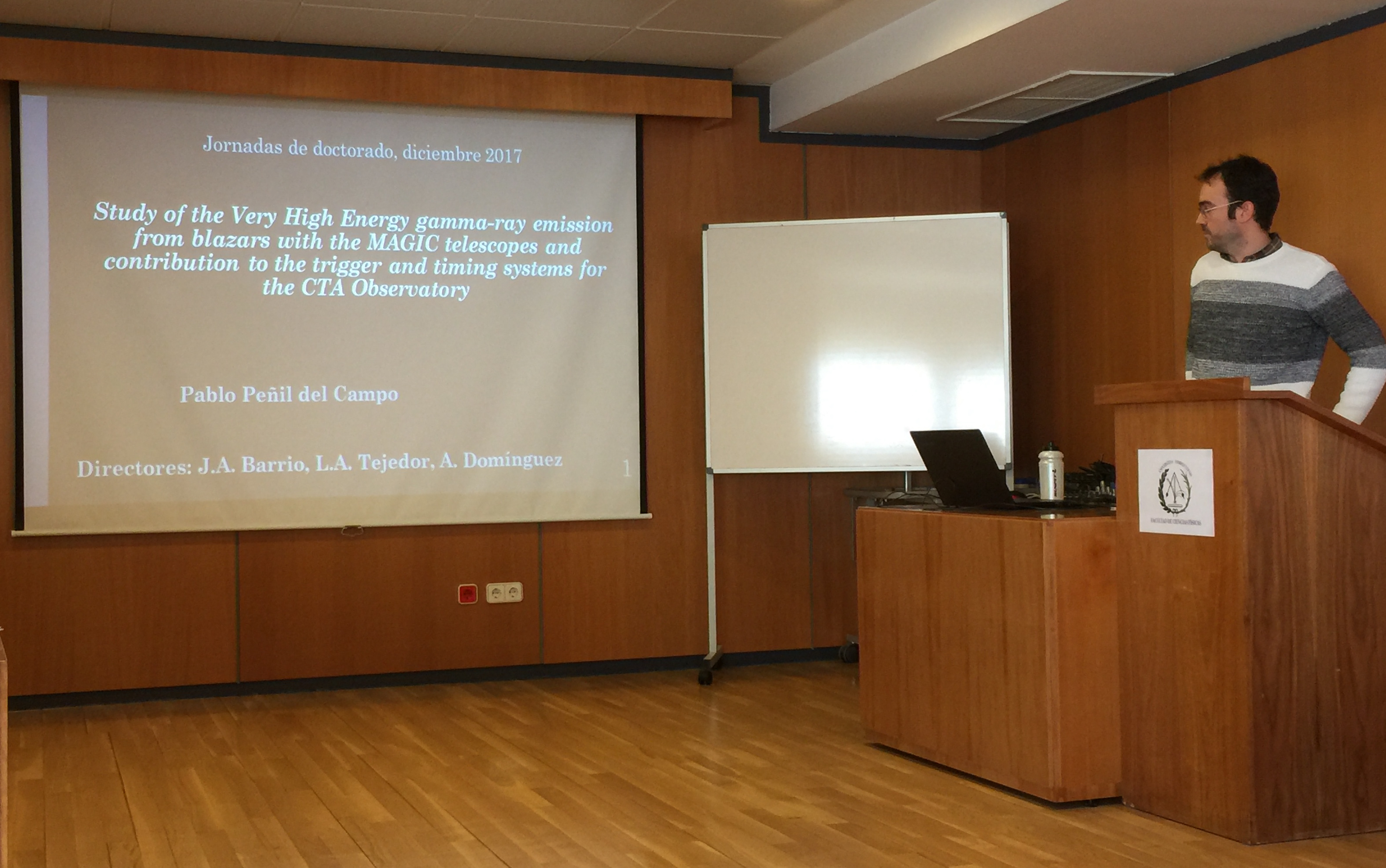 |
Presentetaciones de alumnos en su segundo año del Programa de Astrofísica:
|
|
Martes 19: 12:10 - 12:25 Alumno: Cristóbal Bordiú TÍTULO: RESUMEN: Just before exploding as supernovae, many massive stars undergo the luminous variable (LBV) phase, a short period of high instability. LBV stars are stellar "pressure cookers": living close to the Eddington limit, they exhibit strong radiation fields, steady and dense winds and occasional giant eruptions that result in large nebulae of processed material. Despite these harsh conditions, there is evidence for warm molecular gas surviving around several LBVs, usually forming shell-like structures. This molecular material is key to understand the physical mechanisms that drive the latter evolution of massive stars. The main goal of my thesis is to characterize the interaction between evolved massive stars and their circumstellar material (in terms of energetic outputs, mass-loss rates, etc.). This will contribute to create a more accurate picture of the final stages in the life of massive stars. In this talk I will present the current status of my research, from the initial state-of-the-art review to the preliminary results of the first observations: the detection of several lines of CO and other high-density tracers around the LBV candidate MGE 042.0787+00.5084.
|
|
|
|
Martes 19: 12:30 - 12:45 Alumno: Pablo Peñil Del Campo TÍTULO: El trabajo se organiza en dos grandes áreas: la ingeniería y la física. Ingeniería: 1. Implementación del software (en C/C++) para realizar la tarea de control, monitorización y detección de errores de dos componentes de la cámara. 2. Implementación del software (Python) de envío de datos entre diferentes componentes de la cámara mediante comunicacionesTCP/IP. 3. Testeo y validación del sistema de timing; comprobación del sistema de time-stamping de los eventos generados. Física:
|
|

